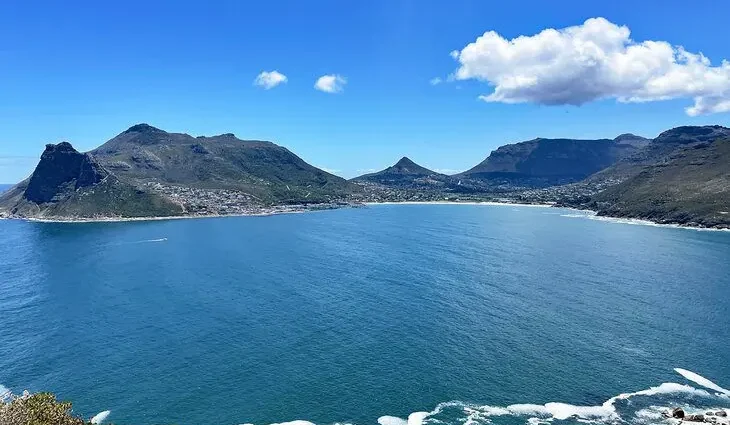Contents
- 1. Ride the Table Mountain Cable Car
- 2. Wander the Trails atop Table Mountain
- 3. Go on Safari in Kruger National Park
- 4. Explore the Victoria & Albert Waterfront
- 5. Visit the Kirstenbosch National Botanical Garden
- 6. Frolic with Penguins on Boulders Beach
- 7. Drive the Cape of Good Hope
- 8. Hike Lion’s Head
- 9. Explore Blyde River Canyon
- 10. Hike the Robberg Nature Reserve
- 11. Visit the Apartheid Museum
- 12. Explore the Cango Caves
- 13. Drive the Garden Route
- 14. Marvel at the Knysna Heads
- 15. Camps Bay Beach
- 16. Take Chapman’s Peak Drive
- Map of Things to Do in South Africa
Author Meagan Drillinger traveled extensively through South Africa in 2022.
South Africa is a country that will forever change you. One visit, and it will be under your skin and will, without a doubt, change the way you travel. Most importantly, it will inspire you to keep coming back for more.
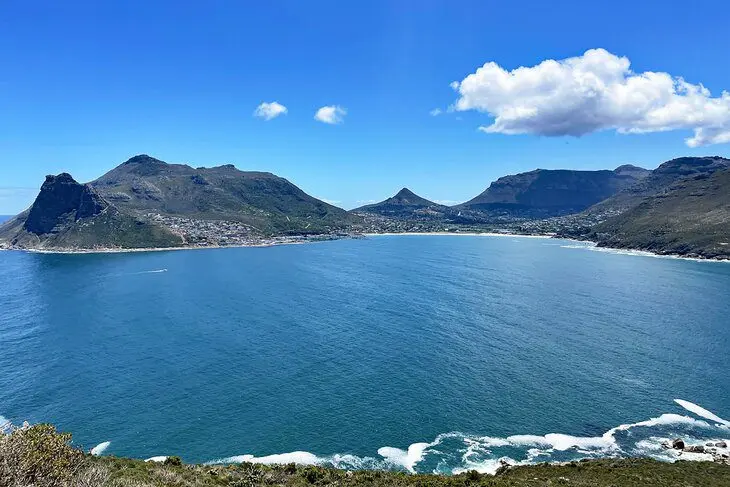
South Africa has an endless list of things to do and places to visit, from gorgeous white-sand beaches to thriving cities, mountains to hike, and wildlife reserves to explore. It has history, culture, art, and cuisine. Explore the electricity of Cape Town and Johannesburg, or disappear into the bush of Kruger National Park. Lose yourself in the trails of its many mountain ranges, and get acquainted with its dozens of charming seaside villages.
These are the best things to do in South Africa. Enjoy the journey!
1. Ride the Table Mountain Cable Car

The best way to get your bearings in Cape Town is to view it from above. Table Mountain is not only the symbol of Cape Town, but it also offers a bird’s-eye view of the sprawling city below.
Table Mountain is a flat-topped mountain that overlooks the city of Cape Town and is the focal point of Table Mountain National Park. Riding the cable car to the top of the mountain is one of the best things to do in South Africa, and a must for any introduction to Cape Town.
The Table Mountain Aerial Cableway is one of the most unique ways to get to the top of the mountain, not to mention the easiest. The cable car travels from a central meeting point along the mountain road up towards the very top of the mountain. The floor inside the cable car rotates 360 degrees on the way up, giving everyone in the car the opportunity to see dramatic views out over the city and to the Atlantic Ocean.
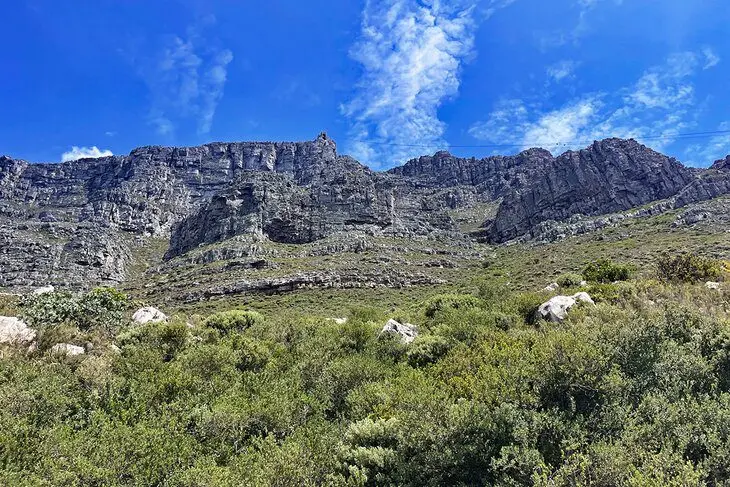
The journey up the mountain takes approximately five minutes, ushering passengers 1,089 meters above Cape Town and into the clouds.
Address: Tafelberg Road, Gardens, Cape Town, 8001, South Africa
Accommodation: Top-Rated Resorts in Cape Town
2. Wander the Trails atop Table Mountain
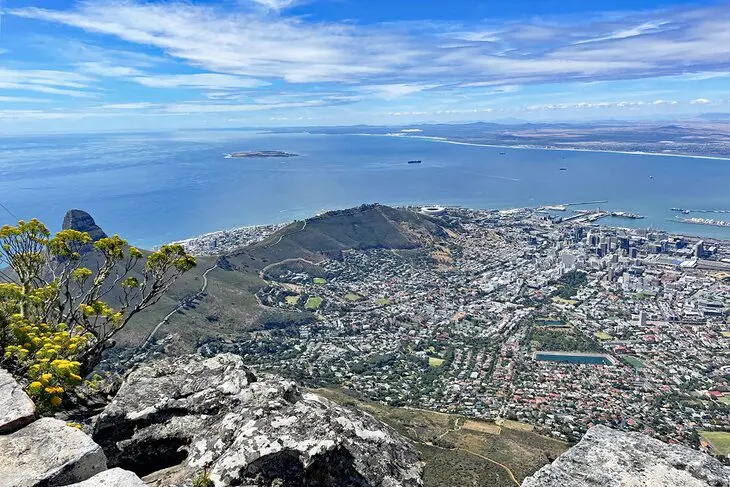
Once you’ve reached the top of the mountain, the best thing to do is walk around and take in the views from all the many wonderful angles. The summit of Table Mountain sits at 1,086 meters above sea level and has three different hiking trails that weave across the surface.
Table Mountain is part of a national park and is also a World Heritage Site, known for its thousands of different plant species and the many animals that call it home.
Intrepid visitors can even hike up the mountain. You can do the hike as part of a half- or full-day experience. A half-day experience takes three hours and covers three kilometers, while the full-day hike covers five kilometers and takes about five hours to complete.
No matter which way you get to the top, it’s worth it for the stunning views and opportunity to appreciate the magnificence of Cape Town below your feet.
3. Go on Safari in Kruger National Park
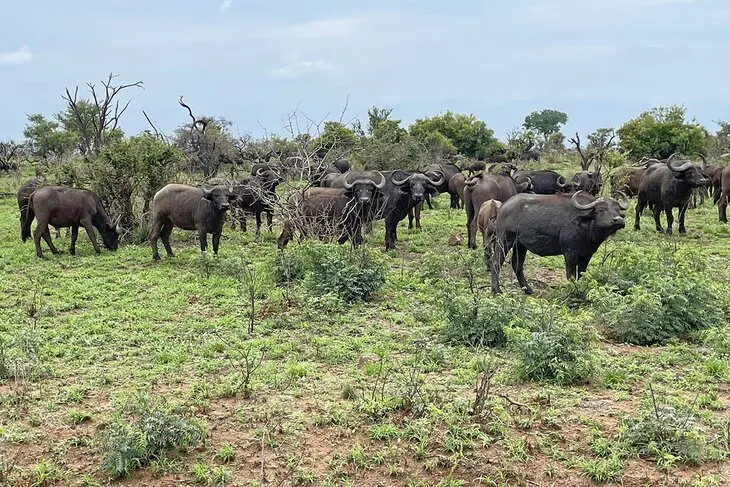
An overwhelming two million hectares of wide-open space is what you can expect from Kruger National Park. South Africa’s most famous national park, Kruger National Park will be a wildlife experience that you will never forget.
Tucked up in the northeastern corner of the country and bordering Mozambique, Kruger National Park is one of the best spots in South Africa to see the Big Five (lions, rhinos, leopards, buffalo, and elephant). But it has hundreds of other species of mammals, reptiles, and birds, as well.
The vast landscape is breathtakingly beautiful, and tourists can explore Kruger National Park either through a self-drive or guided safari.
The park has many lodges within its borders, or visitors can opt for accommodation on private game reserves near the park.
Read More: Best Game Reserves in Africa
4. Explore the Victoria & Albert Waterfront
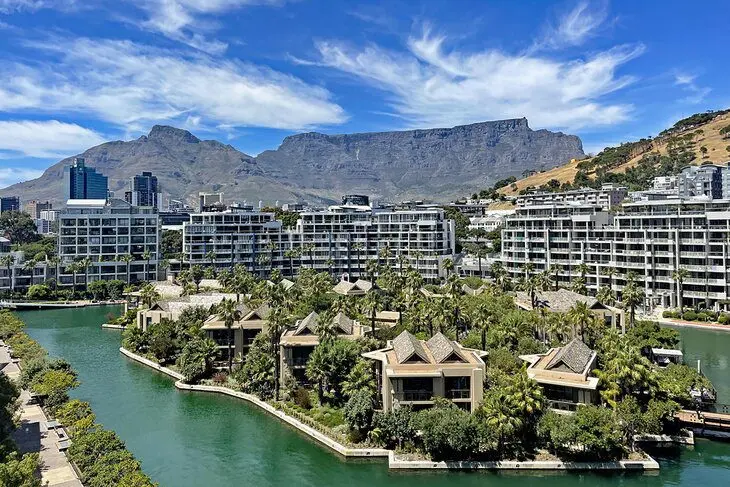
The Victoria & Albert Waterfront is where you will feel the excitement and energy of Cape Town flow through your veins. The centrally located neighborhood is at the heart of the action of the city. Sitting in the shadow of Table Mountain, the waterfront area is where you’ll find buzzy restaurants, designer shopping, luxury hotels, and a marina that is constantly humming with activity.
A shopper’s paradise, the Victoria & Albert Waterfront has more than 450 retail outlets that sell everything from souvenirs to high-end fashion and furniture. The mall at the waterfront is simply massive, and a top place to visit, where both tourists and residents like to spend their time.
At the center of the waterfront is an open-air amphitheater, where you’ll find a constant stream of live music, performers, and even televised events like the World Cup or the Olympics, depending on what’s in season.
Tip: Staying at the waterfront will put you at the center of the activity. A favorite hotel here is the One&Only Cape Town . For best restaurants, try Willoughby & Co. for sushi or Primi for pizza and pasta. Karibu is another amazing waterfront restaurant serving local South African classics.
5. Visit the Kirstenbosch National Botanical Garden
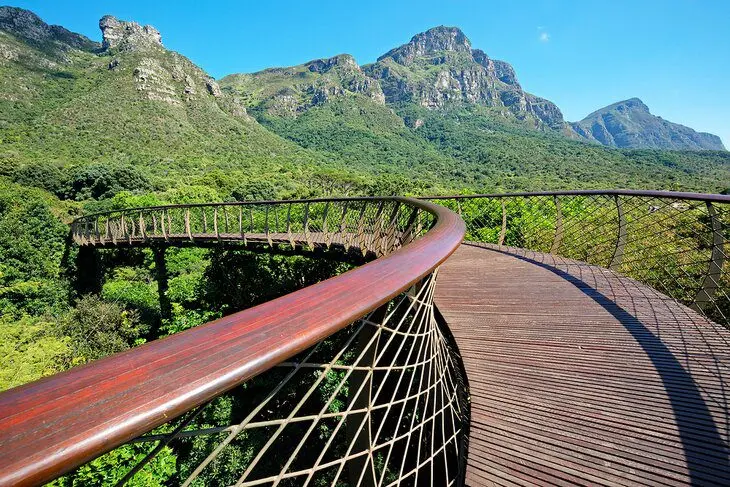
Step off the streets of Cape Town and into a veritable tropical paradise. The Kirstenbosch National Botanical Garden is one of the most comprehensive gardens in the world, not to mention one that is like the setting of a fairy tale.
Tucked up against the slopes of Table Mountain, Kirstenbosch is home to more than 2,500 species of plants that are found along the Cape Peninsula. Within the overall garden are several smaller gardens, like a fragrance garden, a medicinal garden, and a protea garden.
You’ll also find a sculpture garden and a 130-meter canopy walkway that snakes its way high above the trees of the Arboretum.
One of the most beloved areas of the botanical garden is the dinosaur area, which features five life-sized, anatomically correct dinosaurs, sculpted in tin. You can find these by the Cycad Amphitheatre.
Address: Rhodes Drive, Newlands, Cape Town, 7735, South Africa
6. Frolic with Penguins on Boulders Beach
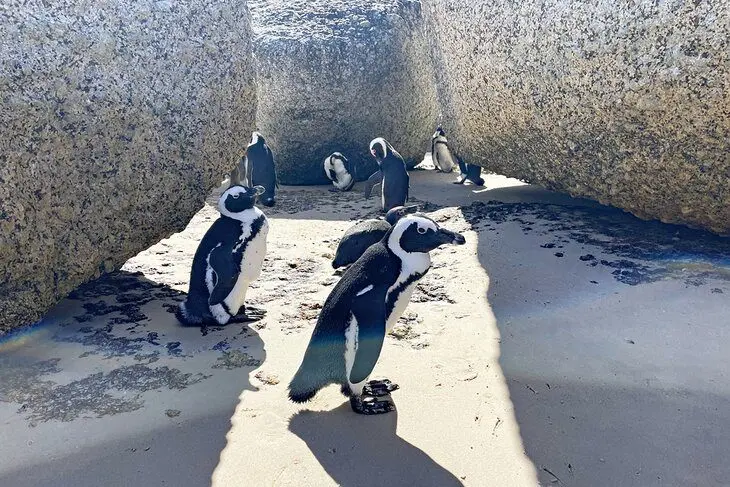
One of the highlights of a visit to South Africa is a stop at Boulders Beach for a chance to visit with the resident penguins.
Boulders Beach is about an hour from Cape Town along the Cape Peninsula, just outside the town of Simon’s Town. The sugary white sands of Boulders Beach are best-known for the massive stone boulders (of course), as well as the colony of cute penguins that call the shoreline home.
Boulders Beach is part of the Table Mountain National Park Marine Protected Area, which means that the beach is well maintained and safe. It’s also rarely crowded, which means you’ll likely always have a patch of sand to lay your towel on, likely amid droves of waddling penguins.
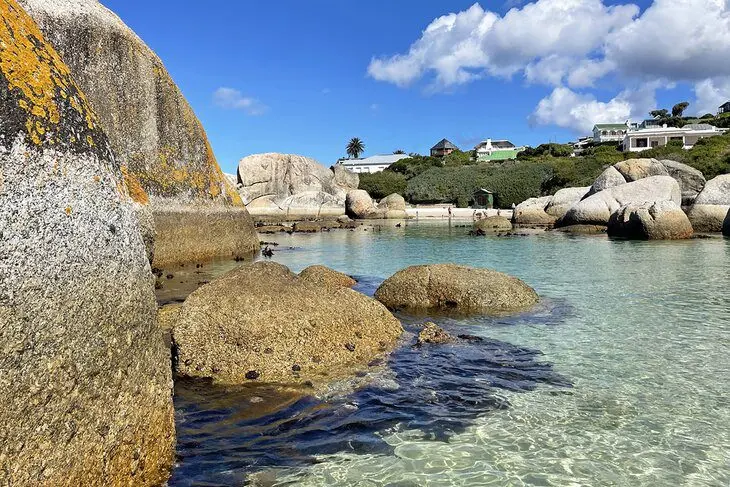
The water at Boulders Beach is crystal clear, and the views are straight out of a postcard. Be aware that you need a bit of agility to scramble over the boulders to get to the penguins. If that’s not doable, a viewing platform and boardwalk is available a bit down the road at Foxy Beach.
Visitors will need to pay a small fee to access Boulders Beach. The fee is R152 for adults and R76 for children.
7. Drive the Cape of Good Hope
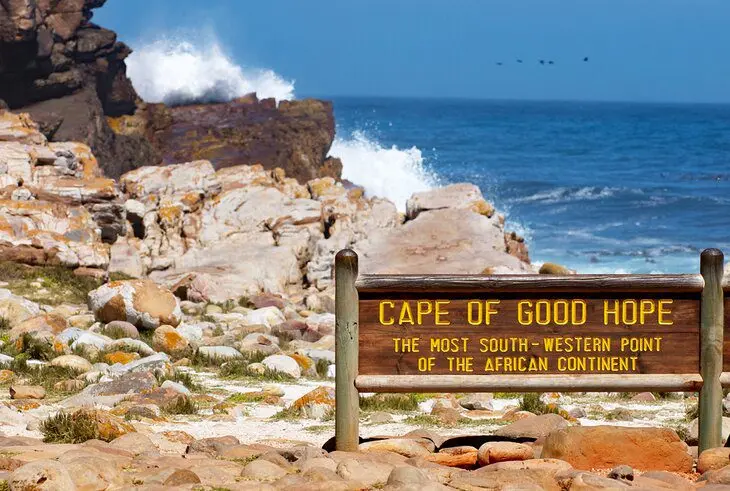
Dramatic coastline and churning Atlantic waters, endless views south towards the South Pole, and playful penguins are what you can expect with a visit to the Cape of Good Hope.
Contrary to popular belief, the Cape of Good Hope is not the southernmost place to visit in Africa. That would be Cape Agulhas, along the Garden Route, about 176 miles from Cape Town. Still, the Cape of Good Hope is the most southwestern point, and is one of the most beautiful places to visit in South Africa.
Climb up to the lighthouse for the very best views. You can take the pathway up to the top or the funicular, which is much faster. Either way, brace yourself for impressive views out to the horizon and beyond.
The best way to get to the Cape of Good Hope is to drive from Cape Town. It is about 70 kilometers from the city.
8. Hike Lion’s Head
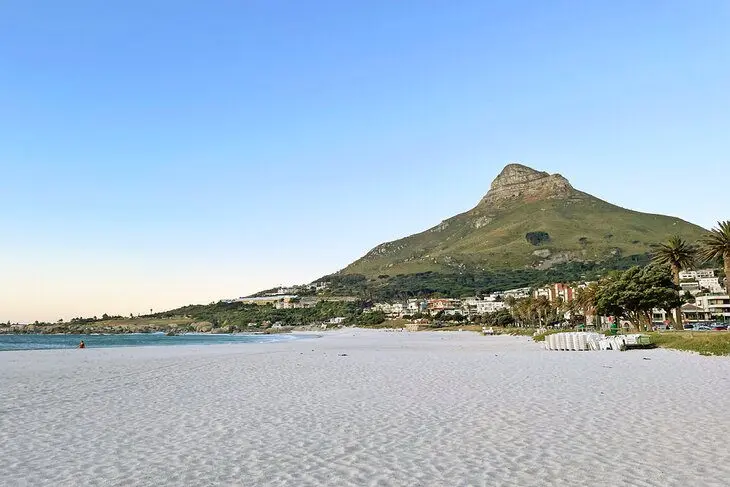
South Africa’s mountains have some of the best hiking on the African continent. But you don’t have to go far from Cape Town to get your steps in. Lion’s Head is one of the city’s mountains and a favorite locals’ spot to get in a half-day hike just outside the city.
Lion’s Head is one of the iconic mountains of the city, next to Table Mountain and Devil’s Peak, and is shaped like, you guessed it, a lion’s head. The trail up the mountain rewards with epic views across the city and sea, reaching far into the distance up the coastline.
Lion’s Head’s trail is five kilometers and rises 500 meters as it wraps its way around the head. Views are spectacular from the get-go, but keep in mind that some sections of the trail are exposed, and ladders are positioned to help assist. In fact, one section has staples and chains, though you can go an alternative way if this is too advanced.
One of the most popular times to hike Lion’s Head is at sunrise, but, really, you won’t find a bad time to hike (except perhaps in the scorching heat of a summer’s afternoon).
9. Explore Blyde River Canyon

The Blyde River carves its way across Mpumalanga province in South Africa’s northeastern corner. After thousands of years of slicing the landscape, South Africa has been blessed with the magnificent Blyde River Canyon, one of the largest canyons in the world and one of the top natural sights in South Africa.
Not far from Kruger National Park, the canyon spans nearly 30,000 hectares and forms part of the Greater Drakensberg escarpment. Brace yourself for towering striated rock formations that are blanketed in mossy green foliage. The sparkling Blyde River shimmers at the base, while on a clear day, you can see for hundreds of miles ahead of you.
One of the best ways to explore the canyon is to drive Route 532, which outlines many of the humongous rock formations and has ample opportunity for viewpoints — many with dramatic waterfalls included.
Accommodation: Top-Rated Resorts in Mpumalanga
10. Hike the Robberg Nature Reserve

If your travels to South Africa take you to Plettenberg Bay, you will have to make a stop at the Robberg Nature Reserve. Spread over a rocky peninsula that juts out into the Indian Ocean, the Robberg Nature Reserve is a gorgeous spot for pristine views, challenging hikes, and millennia of geological history.
The conservation area is a World Heritage Site thanks to its diversity of wildlife, as well as its prehistoric rocks and Stone Age artifacts that have been found in the surrounding caves. Rocks from the region date back more than 120 million years. It’s simply fascinating to wander a part of the planet that has remained virtually unchanged since Africa was part of the Gondwanaland landmass.
11. Visit the Apartheid Museum
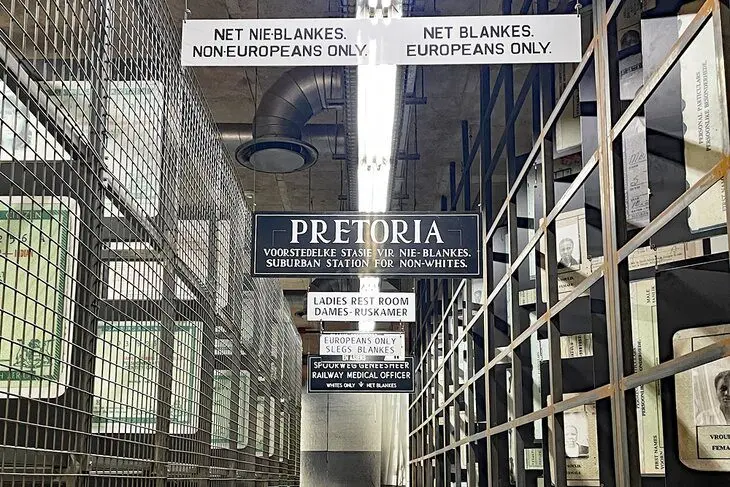
South Africa’s history is fraught with many centuries of racism and racial segregation. From 1948 to 1994, the country lived under the rule of Apartheid, an institutionalized system of racial segregation. While Apartheid officially ended in 1994, South Africa is still living with the impact of this racial divide and the deeply rooted prejudices that both caused it and came out of it.
To fully appreciate the country of South Africa and its people, it is profoundly important to learn and understand the effects of Apartheid. No better place sheds light on South Africa’s history than the Apartheid Museum in Johannesburg.
Using a wide variety of media, from video footage to photographs, and artifacts and written stories, the museum takes visitors through the rise and fall of South Africa’s oppression.
The museum takes about two hours to do properly and it can be a very emotional journey through its many rooms and halls. It is a must-see when visiting Johannesburg because it helps to put so many of the country’s current issues in perspective.
Address: Northern Parkway and Gold Reef Road, Johannesburg, 2001, South Africa
12. Explore the Cango Caves
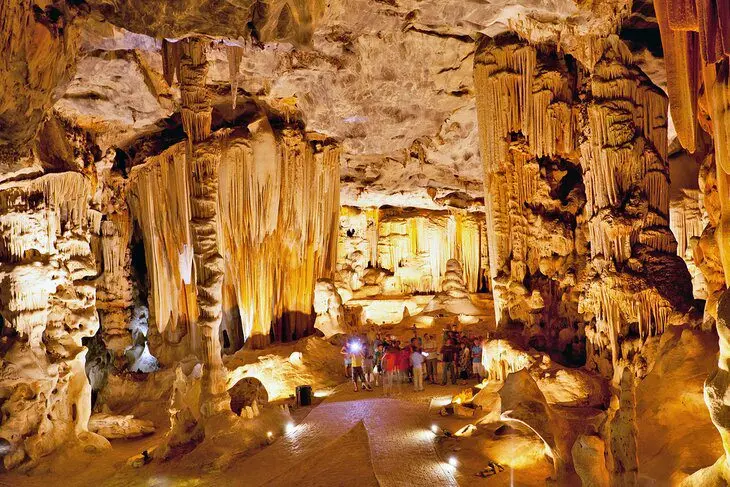
Time travel never felt as possible as it does with a visit to the Cango Caves. This natural landmark is absolutely remarkable and is a complete trip back in time — millions of years ago.
The caves were formed 20 million years ago and consist of a series of hidden chambers that channel back into limestone cliffs. Often thought of as one of the great Natural Wonders of the World, this is the biggest show cave system on the African continent. It also happens to be one of South Africa’s earliest tourist attractions, with tourists coming as early as the 19th century to view them.
Inside the caves is a sight to behold, with towering formations and echoing halls, all in a variety of colors. Lights are set up in the caves, which adds a touch of drama. Your first experience in the cave will be Van Zyl’s Hall, a 107-meter-long, 54-meter-wide, and 17-meter-high chamber. It’s a staggering experience. From here, it gets even more impressive, with rock formations like Cleopatra’s Needle, which is estimated to be 150,000 years old.
13. Drive the Garden Route

South Africa has a few scenic drives worth doing, but none is as famous (or beautiful) as the Garden Route. This iconic oceanfront drive hugs the southern shores of the country along the Indian Ocean, running 300 kilometers from Mossel Bay to Storms River.
The route follows along the Indian Ocean, passing through centuries-old virgin forests and the Tsitsikamma and Outeniqua mountain ranges. Along the way, the road (predominantly the N2) passes through charming coastal villages and presents ample opportunity for spectacular wildlife viewing.
Whale watching is one of the top things to do along the Garden Route, particularly between June and November when whales from Antarctica come up to breed and calve in the warm, calm waters.
While the drive can be done in just a few days, the best way to experience the Garden Route is to give yourself time. Stop in towns like Mossel Bay, Knysna, and Plettenberg Bay to really absorb the slow-paced, beachy lifestyle. Snack on fresh seafood, visit a nature reserve, and test your bravery at many of the outdoor adventure activities. Tip: Mossel Bay actually has one of the longest over-ocean ziplines in the world.
14. Marvel at the Knysna Heads

If you do drive the Garden Route, then a stop at the Knysna Heads is a must. These rugged, rocky peaks stand like sentries guarding the entrance to the calm Knysna Lagoon, separating it from the crashing waves of the Indian Ocean.
The Knysna Heads are iconic to Knysna and bring visitors from all over the world to gape at their natural beauty. The East Head Viewpoint is the most accessible by car. It’s a drive up a winding hillside that emerges to a parking area and a short path that leads to several viewing platforms. From the platforms, you’ll have sweeping views of the West Head, the lagoon, and the village in the distance.
The West Head is a bit more challenging to get to — you can only access it via boat as it’s in the Featherbed Nature Reserve across the lagoon. But the extra effort will be worth it for the lack of other visitors and the unspoiled nature that awaits.
Accommodation: Where to Stay in Knysna
15. Camps Bay Beach
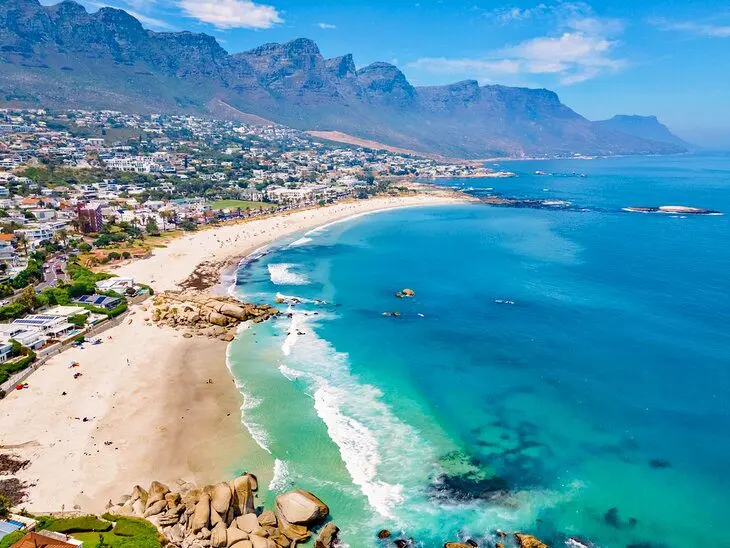
Of all the beaches in and around Cape Town — and there are many — few are as beautiful as Camps Bay Beach. Camps Bay is a very popular community just outside of Cape Town, known for its great restaurants and entertainment along the beachfront strip. But the real draw to Camps Bay is the long stretch of white sand and the lovely turquoise water in front of it.
The backdrop of Camps Bay is the Twelve Apostles mountain range, which is iconic to Cape Town. Such a dramatic setting makes the beach here feel even more special. It’s also one of the most accessible beaches in the city, with parking right alongside it, which is a perk.
You’ll have your choice of restaurants when visiting Camps Bay, but our favorite is The Godfather, a seafood restaurant that allows you to pick your own seafood by the piece or kilo and have it prepared anyway you like.
16. Take Chapman’s Peak Drive
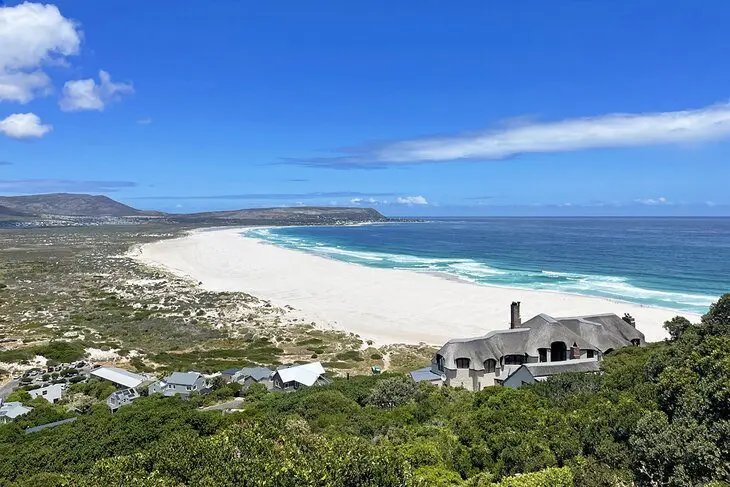
Remember that South Africa is not short on beautiful drives and epic views. Chapman’s Peak Drive is yet another glowing example of the beauty that can be found when traveling South Africa on wheels.
Chapman’s Peak Drive is the road that winds its way between Noordhoek and Hout Bay just outside of Cape Town before venturing down the rest of the Cape Peninsula. The windy route clings to the mountainside and offers resplendent views of the rich color palette of the Western Cape. Lush greens, vibrating turquoise, and stark white sand, all with the backdrop of the gorgeous mountains behind it — it’s truly a beautiful little road trip.
Stops to consider are both Hout Bay and Noordhoek, but continuing to Table Mountain National Park is also a must.










